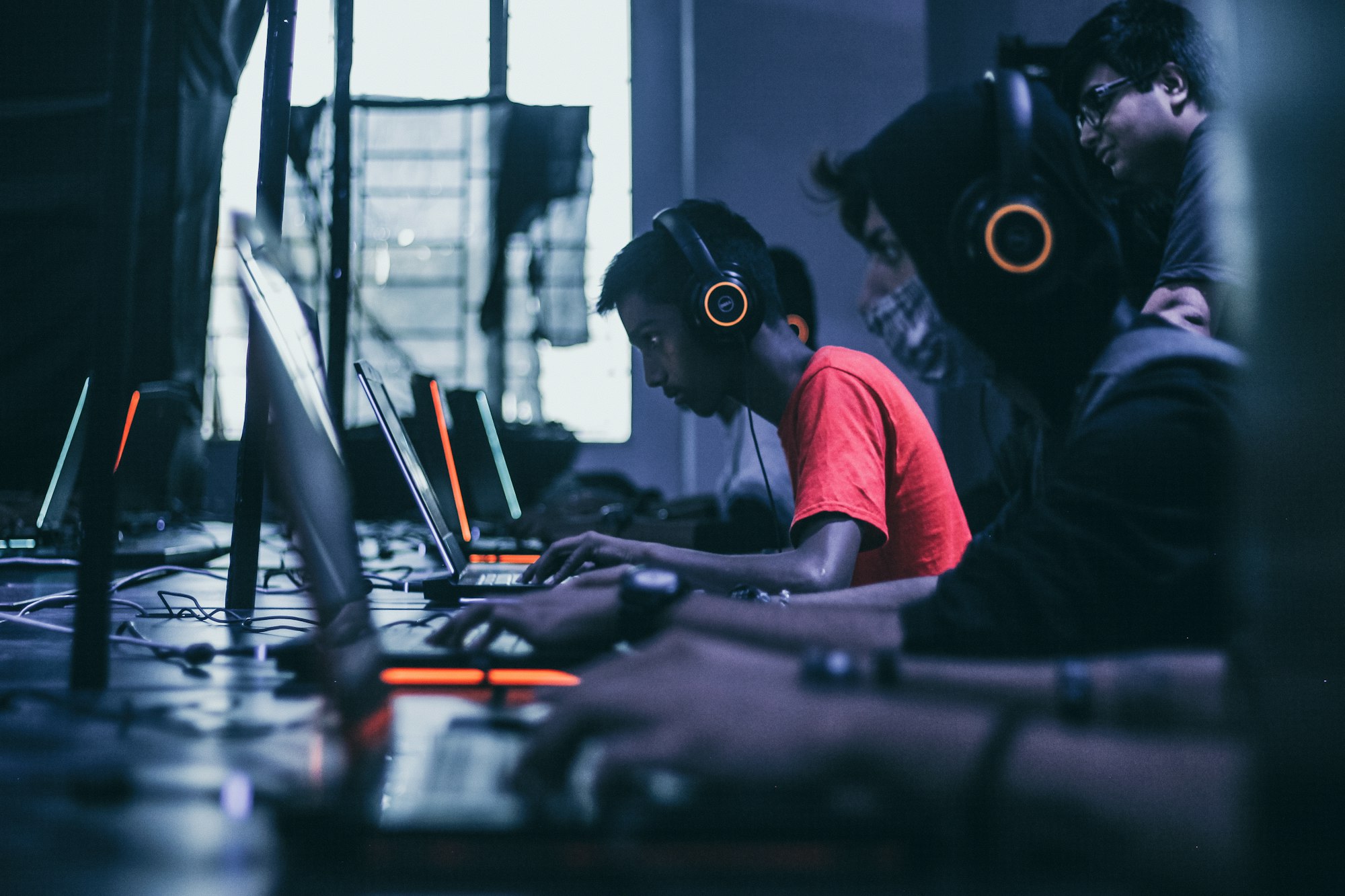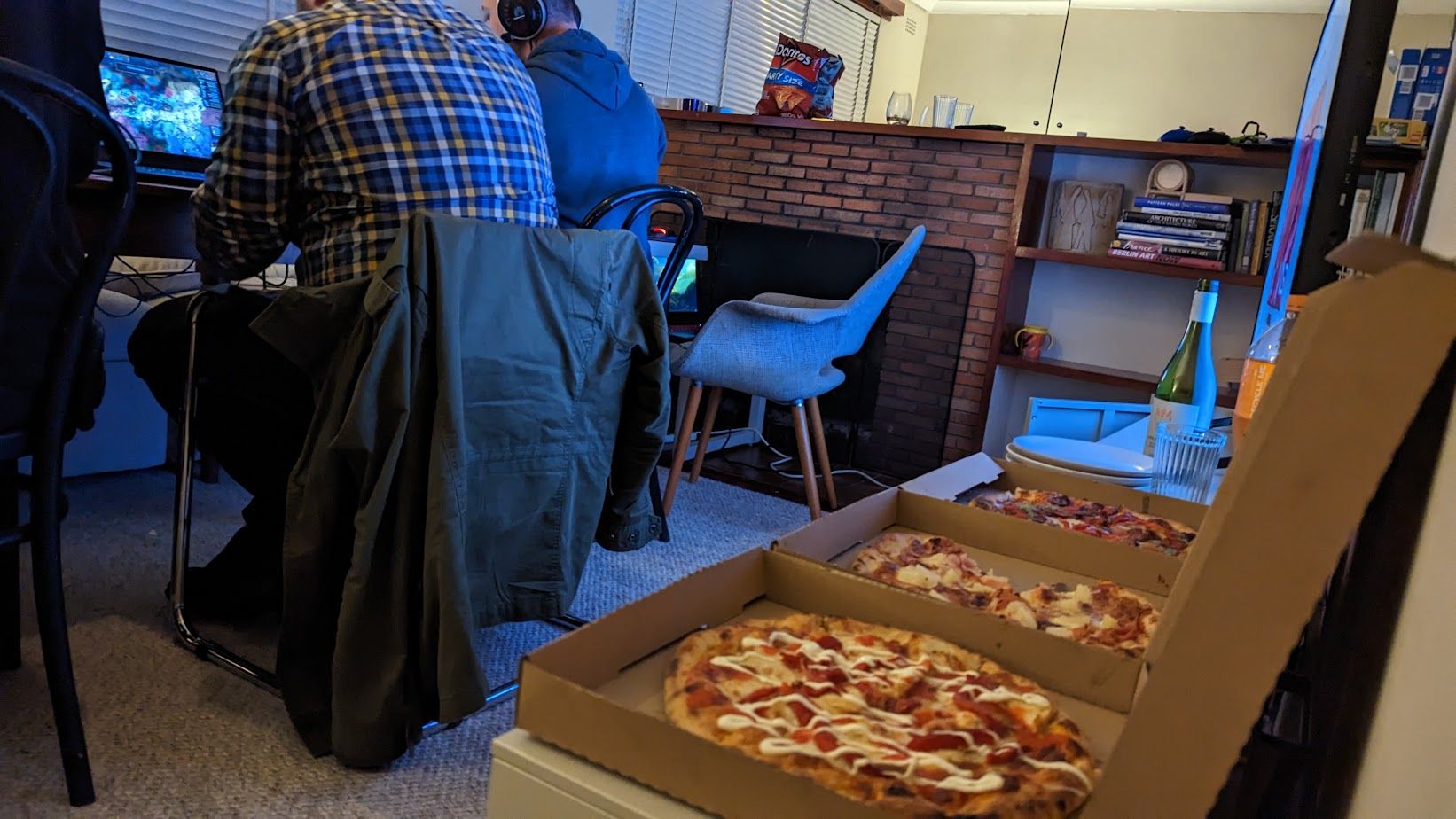The Forgotten Art of the LAN Party
Diving into the nostalgia of LAN parties and exploring its rise, fall, and comeback in the evolving landscape of multiplayer gaming

It is the year 2001. With a touch of Tetris-style wizardry, my friends and I manage to fit three 19-inch CRT monitors, three beige computer towers, a 24-port network switch, and a box full of network cables into the confines of a 1984 Ford Laser. The Ford car's small engine groans as it tries to move with the weight of three teenage boys and their desktop computers. A short time later, after a very bumpy ride in the tiny car with the fully compressed suspension, we arrive at my friend’s house. It’s a school holiday. There is the familiar crackling noise of a packet of Doritos opening, followed by the pop-hiss of a can of Coke. A couple of hours later, the host’s living room is like a blue spider web, the network cables linking all our computers together. In three days, we will emerge bleary-eyed from one of the best times of our lives.
This is a LAN party.
An Intimate Gaming Experience
There’s nothing that can quite compare to the magic of a LAN party. For those unfamiliar, the advantages may not be immediately apparent. With online matchmaking and voice chat through platforms like Discord, online multiplayer has become more accessible than ever. A LAN party might sound like multiplayer with extra steps, but as anyone experienced with these events will tell you, a good LAN party is about so much more than gaming.
Strictly defined, a LAN party is a social gathering where a group of people will connect gaming devices over a local area network (LAN) to play multiplayer games. Traditionally, LAN parties focused on PC gaming, but the emergence of network-capable consoles in the 2000s saw the term broaden to include gatherings with multiple consoles connected to the same local network.

The main advantage of a LAN party, especially in the era before widespread high-speed broadband, lay in nearly eradicating latency concerns. The shorter the distance data has to travel between users, the smoother the experience. Having a local network of users all gathered in the same room is about as close as you can get without playing split-screen on the same device.
The defining element of a LAN party, however, is the social factor. Playing a game with others in the same physical space, sometimes huddled side-by-side on the same large table, is an intimate affair. Cries of joy and frustration fill the air. Your ears are assaulted with sounds of gunfire and computer fans, your nose with a heady mix of body odour, energy drinks, and pizza.
Scheduling and executing a LAN party is rarely a simple affair, so they typically aren't something you do for any less than a day or so. The shortest LAN party I have attended has lasted for at least eight hours, the longest about three days. It's an intensely concentrated social experience, the sort that creates lasting memories.

What Happened?
The emergence of high-speed Internet undercut one of the chief advantages that LAN play had in the 1990s, mainly the ability to almost eliminate lag. LAN parties had never been easy to organise, so while they continued (and still do to this day), their popularity took a rapid downturn. It was not just faster Internet speeds that contributed, though. The rise of Internet cafes that focused on gaming provided a convenient and affordable way for gamers to have LAN party-like experiences without the hassle of setup and cleanup.
The fall of the LAN party had begun, and would only continue to speed up through the first decade of the 2000s.

The next major blow to the LAN party was due to flagging support from game studios. In the 2010s, always-online DRM became more common, and studios became more strict with their money, not wanting to give any to consumers who they knew would still pay. Spawn installations were a popular way to share games at LAN parties, enabling multiplayer gameplay with a single game CD. Age of Empires, StarCraft, Carmageddon, and Diablo had all allowed spawn installations, but the practice had long since fallen out of favour.
By this point, a feedback loop had been established – DRM and other external factors had caused a drop in the popularity of LAN gaming, and as that popularity waned, fewer and fewer studios were willing to commit developer resources to developing and supporting LAN play. Eventually, LAN play disappeared entirely. Even when you decided to hold a LAN party, many modern games would still require all players to be connected to a server hosted on the Internet.

Though they might not have been responsible for the killing blow, factors such as online matchmaking and voice communication over platforms like Discord served to kick LAN parties while they were down. The perceived distance between two players online was closer than ever before, and with it, the perceived benefits of a LAN party became less apparent to the uninitiated.
Down, Not Out
Thankfully, it’s hard to kill the LAN party, because what they offer is so unique. It is ironic that it is now easier than ever to host one.
Gaming laptops are common and powerful, and LED monitors are light-weight compared with the huge CRT bricks that gamers once had to haul around. Most homes have a wireless router. In most cases, all you need to do to host a LAN party is buy some snacks and share your Wi-Fi password. There’s a good deal more complexity to guarantee a truly successful LAN party, but the fact is that there’s never been an easier time to get into LAN gaming. Local multiplayer support hasn’t entirely gone away either, and there is a good mix of classic and new titles that support LAN play.

Types of LAN Parties
During the height of their popularity, LAN parties took on two distinct flavours. The first of these was the most commonplace: a small LAN party of about 10 to 15 people. These were usually hosted in somebody’s garage, or possibly a cleared-out living room. The second type of LAN party was the large, organised event, typically in the form of sponsored events, with names like Intel, AMD, 3dfx Interactive, and Nvidia plastered all over banners throughout a convention centre filled with rows and rows of computers and a bigger carbon footprint than a brown coal power plant. Large LAN events usually incorporated an Esports element, and some well-known events include QuakeCon.

I personally attended only one of these large LAN events, which was the Call of Duty 4: Modern Warfare premiere at Swinburne University in Melbourne, organized like a LAN party. However, as much as they are a spectacle of the golden era of PC gaming, it was always the smaller LAN parties that provided the best experiences. These were the events with your closest friends, filled with indulging in copious amounts of local pizza, nodding off on a friend’s couch, and sharing all the pirated movies and TV shows downloaded on LimeWire since the last get-together.
A Bucket List Experience
Everyone's approach to gaming is different, but I count a LAN party as an experience that all gamers should try at least once. Even the most well-organised online gaming experience can't compete with the atmosphere of a LAN party. In an increasingly interconnected world, where the Internet is at our very fingertips and touches every part of our lives, there's a subtle irony in the fact that one of the best ways to disconnect and reengage on a personal level is via a local area network.